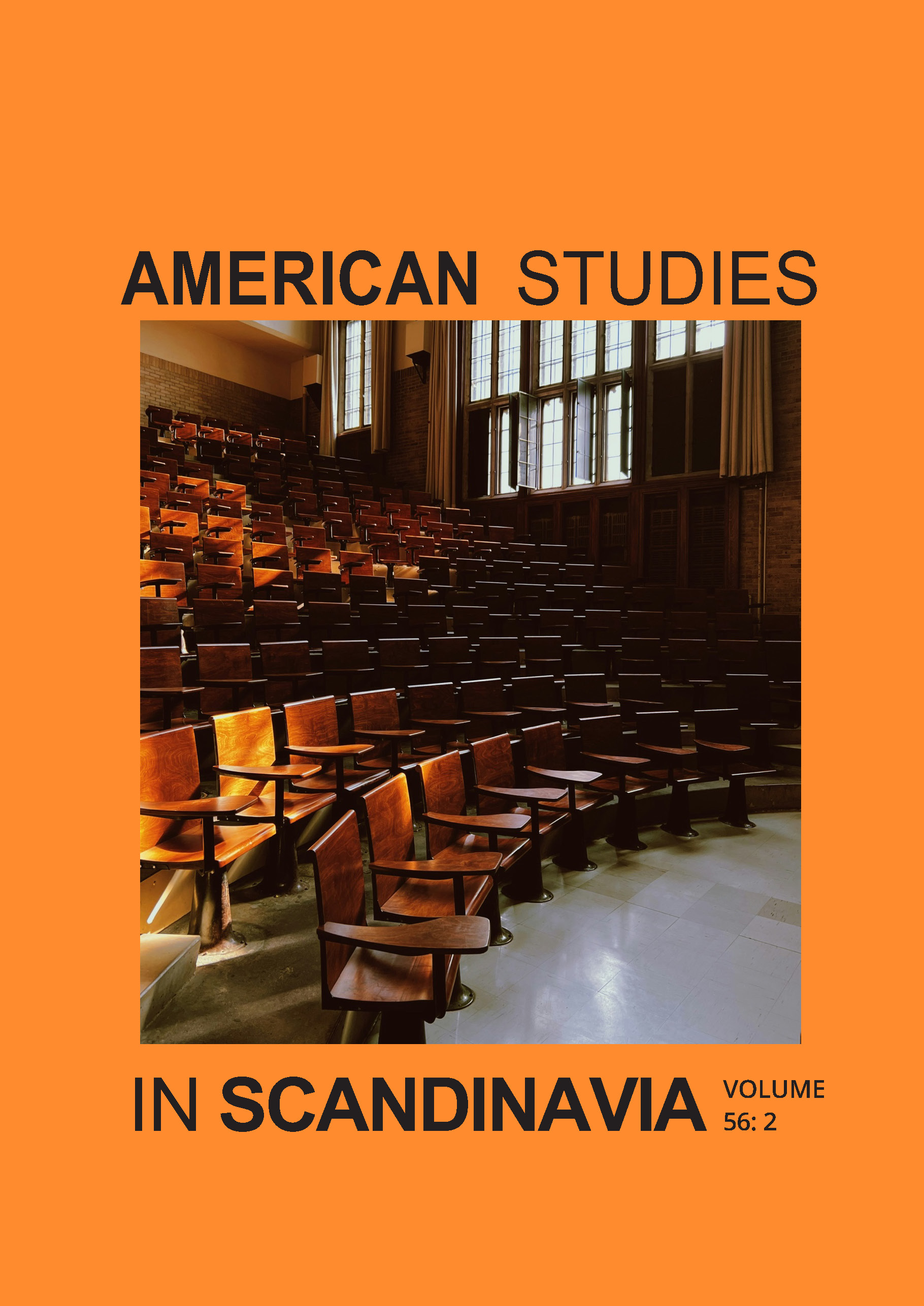Let the Students Map Canadian Studies: Exploring Stereotypes of Canada
DOI:
https://doi.org/10.22439/asca.v56i2.7378Keywords:
Canadian studies, stereotypes, othering, intercultural education, critical thinkingAbstract
This article investigates the perceptions and stereotypes of Canada held by students in Nordic, Scandinavian, and Baltic countries participating in Canadian studies courses. Drawing upon eighty-seven papers submitted between 2021 and 2023, the study employs lexicometric analysis to discern recurring “othering” strategies employed by students. The interdisciplinary nature of the Canadian studies course, blending literature, history, and political science, aims to equip students with the knowledge necessary to examine the nuances of the Canadian social model. By examining cultural stereotypes, the study redefines Canadian studies as an integral component of (North) American studies, highlighting the importance of challenging initial representations and fostering critical thinking. Findings reveal students’ engagement in the process of othering, reflecting on Canadian identity, multiculturalism, and the integration of First Nations. The study underscores the significance of pedagogical interventions in creating spaces for transformation and critical reflection. Ultimately, it demonstrates the potential of area studies to assist students in structuring academic texts and encourages further exploration of themes related to memorial policies and reconciliation in courses on Canadian studies.
References
Bédard-Goulet, Sara, and Christophe Premat, eds. Nordic and Baltic Perspectives in Cana-dian Studies: An Interdisciplinary Approach to Northern Spaces Narratives. Stockholm University Press, 2023.
Beeghly, Erin. “What is a Stereotype? What is Stereotyping?” Hypatia 30, no. 4 (2015): 675–91. https://doi.org/10.1111/hypa.12170.
Bodenhausen, Galen V., and C. Neil Macrae. “Stereotype Activation and Inhibition.” In Stereotype Activation and Inhibition, edited by Robert S. Wyer, Jr., 1–52. Lawrence Erl-baum Associates, 1998.
Czopp, Alexander M., Aaron C. Kay, and Sapna Cheryan. “Positive Stereotypes Are Perva-sive and Powerful.” Perspectives on Psycho-logical Science 10, no. 4 (July 2015): 451–63. https://doi.org/10.1177/1745691615588091.
Davies, Martin. “Critical Thinking and the Dis-ciplines Reconsidered.” Higher Education Research & Development 32, no. 4 (2013): 529–44. https://doi.org/10.1080/07294360.2012.697878.
Dervin, Fred. “Discourses of Othering.” Inter-culturality in Education (2016): 43–55.
https://doi.org/10.1057/978-1-137-54544-2_4.
England, Ruth. “Countering Stereotypes Through Global Learning.” Teaching Geog-raphy 40, no. 2 (2015): 64–66.
https://www.jstor.org/stable/26383093.
Haraway, Donna. “Situated Knowledges: The Science Question in Feminism and the Privilege of Partial Perspective.” Feminist Studies 14, no. 3 (Autumn 1988): 575–99.
https://doi.org/10.2307/3178066.
Lippmann, Walter. Public Opinion. Harcourt-Brace, 1922.
Oustinoff, Michaël. “The Avatars of the Stereo-type since Walter Lippmann.” Hermès 83 (2019): 48–53.
https://doi.org/10.3917/herm.083.0048.
Premat, Christophe. “Are Canadian Studies a Subfield of American Studies?” Contribu-tion to the conference on North American Studies, Örebro University, October 6–7, 2022.
https://doi.org/10.17045/sthlmuni.21286047.v1.
Premat, Christophe. “Dataset on the Expres-sion ‘Canadian Model’ in the Swedish Press and Student Papers (2021–2023).” Stock-holm University, Dataset, 2024.
https://doi.org/10.17045/sthlmuni.27020581.
Spencer, David, Matthew Riddle, and Berna-dette Knewstubb. “Curriculum Mapping to Embed Graduate Capabilities.” Higher Edu-cation Research & Development 31, no. 2 (April 2012): 217–31.
https://doi.org/10.1080/07294360.2011.554387.
Stockholm University. “Introduction to Cana-dian Studies.” Accessed April 29, 2024.
https://www.su.se/english/search-courses-and-programmes/fr1ikb-1.592899.
Thobani, Sunera. Exalted Subjects: Studies in the Making of Race and Nation in Canada. University of Toronto Press, 2007.
Trudeau, Justin. “Canadian Middle Class Left Out of the Growth Equation.” Toronto Star. October 30, 2012. Accessed October 9, 2024.
University of Oslo. “NORAM1504 – Introduc-tion to Canadian studies.” Accessed April 29, 2024.
https://www.uio.no/studier/emner/hf/ilos/NORAM1504/index-eng.html.
Downloads
Published
How to Cite
Issue
Section
License

This work is licensed under a Creative Commons Attribution-NonCommercial-NoDerivatives 4.0 International License.



